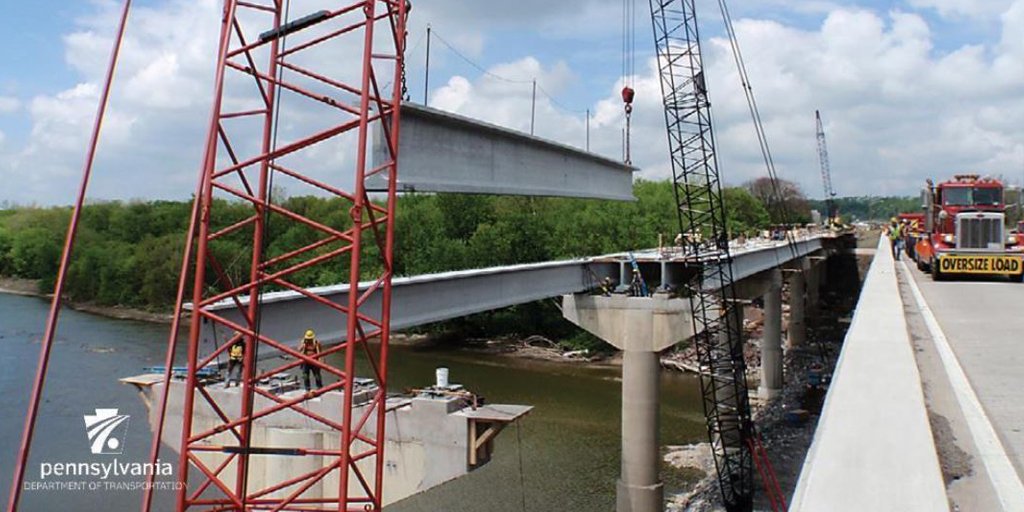
Given it’s home to some of the largest and oldest state-owned bridges in the nation, the Pennsylvania Department of Transportation (PennDOT) is investing significant financial resources into the repair and replacement of bridges in structural disrepair while minimizing disruptions for the traveling public.
A key component in this initiative is the $899 million Rapid Bridge Replacement (RBR) Project, a public-private partnership (P3) with PennDOT and Plenary Walsh Keystone Partners, an investor, developer and operator of public infrastructure.
“The majority of these bridges are in rural communities that would have encountered extended detours or traffic impacts if we had to restrict or close them, so we’re very pleased to deliver this value in those communities,” said Alexis Campbell, press secretary for PennDOT.
The process is moving briskly along with 551 of the 558 structurally deficient bridges replaced and open to traffic. Construction recently began on the final bridge in the program.
PennDOT said in July that the majority of the bridges were replaced over a period of six years, but that given many of the aging bridges are located in rural areas, they would have taken eight to 12 years to fix through the department’s overall program without a P3.
Notably, the RBR project is the first of its kind in the nation to bundle the replacement of hundreds of bridges in a P3 agreement, according to PennDOT. No other P3 project in the country has embarked on a multi-asset, multi-location undertaking of this magnitude.
In addition to leveraging private investment, the innovative delivery of the RBR project is pumping up efficiency. By honing in on bridges of similar size and design, components can be mass produced, which culminates in benefits for taxpayers in terms of time and cost savings.
According to PennDOT, the agency operates one of the most ambitious and comprehensive P3 programs in the country. The featured projects bring value to Pennsylvania by significantly reducing poor condition bridges, supporting motorist safety, enhancing mass transit and rail service, and in some cases, generating new revenue to support future investment.
As of December 2018 there are 1,002 more state-maintained bridges in good condition, and the number in fair condition had increased by 96, when compared to January 2015, said Campbell. As of July, the number of bridges in poor condition is 2,811, compared to a high of more than 6,000 in 2008.
On average, she continued, each year, due to age and deterioration, about 250 bridges of the approximately 25,000 state-owned bridges shift into the “poor-condition” category. In fact, because of the overall age of the state’s bridge population, the rate is expected to increase, Campbell added.
“We must preserve, repair, and replace poor bridges at a greater rate each year to continue our trend of having fewer bridges in poor condition,” she said.